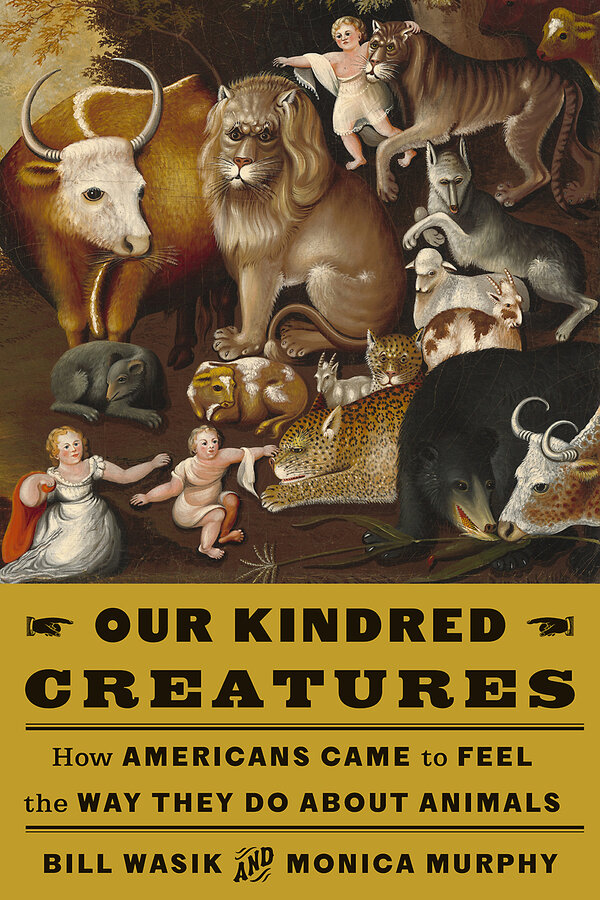How the Civil War spurred the animal welfare movement
Loading...
Before the automobile, cities were powered by horses. These urban equines ferried passengers in streetcars and carriages; they pulled fire engines and ambulances. They delivered everything from milk and ice to mail. They hauled the coal for locomotive and steam engines.
As Bill Wasik and Monica Murphy explain in “Our Kindred Creatures: How Americans Came To Feel the Way They Do About Animals,” horses were often overworked – and brutally punished by their owners when they did not perform.
After being repelled by the violence of a bullfight in Spain in 1848, diplomat Henry Bergh was awakened to the suffering of animals; upon his return to the United States, he committed himself to advocating on their behalf. Bergh founded the nation’s first animal welfare organization, the American Society for the Prevention of Cruelty to Animals, in New York in 1866. He helped pass state anti-cruelty laws that gave him and his ASPCA agents enforcement powers, a role he relished. Top-hatted, tall, and with an aristocratic bearing, he patrolled the streets of New York, confronting the mostly working-class men he saw flogging their horses. “Can’t beat my own horse?” responded one driver incredulously when Bergh commanded him to stop. “You’re mad!”
Wasik, the editorial director of The New York Times Magazine, and Murphy, a veterinarian and writer, call the Gilded Age crusade to ease the suffering of animals “an inspiring, incomplete, important moment in the history of American social change.” In their deft hands, it is a fascinating, elegantly written, and often surprising story.
They cover a period of 30 years, beginning with Bergh’s founding of the ASPCA. The timing, after the end of the Civil War, is significant, as former abolitionists were primed to devote themselves to new issues. Writing of antislavery activists, Wasik and Murphy note that “their moral energies were freed to be channeled into other causes, and their imaginations, trained for decades on ghoulish narratives of cruelty to enslaved people, would turn to the misery of other beings.”
Readers encounter a range of animals in “Our Kindred Creatures.” In addition to working horses, the authors focus on the cattle and pigs being slaughtered in the Chicago stockyards, the elephants touring the country with P.T. Barnum’s circus, and the city dogs swept up daily by dogcatchers and taken to the pound. (They were killed at day’s end if nobody claimed them.) The authors devote a chapter to birds hunted and stuffed to be placed atop women’s hats, according to the fashion of the period, and another to animals used in medical school demonstrations and experiments.
Wasik and Murphy also focus on three humans at the forefront of advocacy on behalf of animals. Bergh has a prominent role in the book. In an interesting twist, he apparently cared less about the animals being abused than about the effects of the abuse on people. He developed the idea of “cruelism,” which the authors describe as “animal suffering that eroded the moral character of the humans who witnessed it.”
Another significant figure in the movement was George Angell, who followed Bergh’s lead by founding the Massachusetts SPCA in 1868. He launched a newspaper devoted to animal rights, Our Dumb Animals, that was published for more than 80 years; it featured treacly fiction and poetry meant to stir young consciences. Angell hoped to find a book that would do for the animal welfare cause what Harriet Beecher Stowe’s “Uncle Tom’s Cabin” had done for abolitionism. In 1890, he was sent a copy of Anna Sewell’s “Black Beauty,” a novel written in the voice of a horse, and in Wasik and Murphy’s words, it struck him “like a thunderbolt.” The book had been published 13 years earlier in England; Angell printed and promoted it in the United States, where it became a sensation.
Finally, Caroline Earle White helped innovate the animal shelter, a humane alternative to the brutal city pound. (Women, the authors note, would eventually become “the engine of the movement for animals around the world.”) At a time before neutering was commonplace, it was necessary to cull the populations of dogs roaming city streets, particularly given the risk of rabies. White, head of the women’s branch of the Pennsylvania SPCA, led the campaign to develop merciful ways of killing strays. She later became an opponent of animal research, establishing the American Anti-Vivisection Society in 1883.
Wasik and Murphy excel whether describing small details of 19th-century animal life or explaining the bigger picture of the animal welfare movement’s place in a rapidly industrializing society. Opponents of the movement argued that concern for animals was merely sentimental moralism that impeded progress.
“Our Kindred Creatures” concludes in the present. Referring to the livestock that provide our meat and dairy, the authors write, “The animals our society treats the most cruelly tend to be those that now live at an enormous remove from us.” Given that the production of meat is a major contributor to climate change, Wasik and Murphy suggest that we are due, once again, to rethink our relationship to animals.








